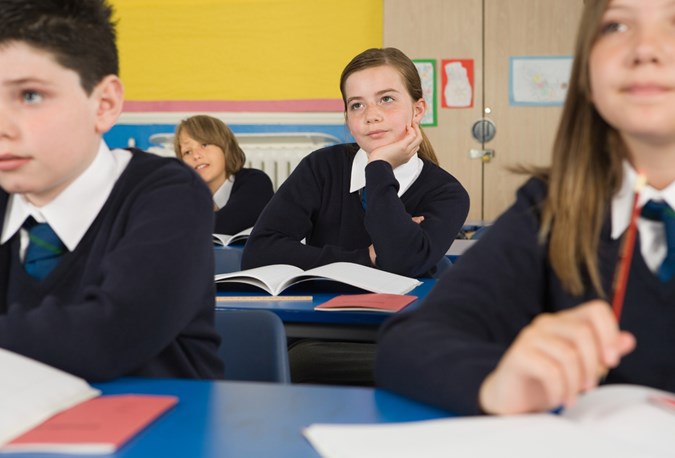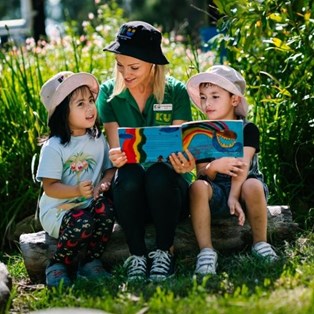What is parallel learning? And how can it help your child?

Can’t decide between an all-girls or all-boys school and co-ed? Unsure of the pros and cons for each? And what are parallel learning schools? Oh, so much to learn and so little time! But alas, parents, we have found the answers for you …
Bradley Fry is the Principal at Tintern Grammar. He is also an education expert. More than just the mathematical and grammatical kind of expert, though, Fry is an expert on how to maximise kid’s learning potential. And when it comes to explaining co-ed versus single-gender schools and the new educational approach, parallel learning, well, he’s your go-to man. Or school principal, to be more precise.
Fry explains parallel learning as a ‘best of both worlds’ approach, because it offers single-gender and co-ed classes in a co-ed school.
“Parallel learning acknowledges that the differing rates of physical, emotional, and psychological development between boys and girls can have an impact on their learning styles,” explains Fry. “However, it also understands that social interaction between genders is essential in developing well-adjusted young men and women.”
Here, Fry explains all the information parents need to know about parallel learning and how it can help children learn and develop to their fullest potential …
Q.
What is parallel learning?
A. If you are thinking parallel parking, you’re kind of on the right track!
“The parallel learning model is a fantastic alternative to co-ed or single-gender education as it offers a ‘best of both worlds’ approach to learning,” explains Bradley Fry, Principal at Tintern Grammar. “Parallel learning is simply the provision of both single-gender and mixed classes operating on a co-educational campus.”
This means your youngling won’t be entirely isolated from the opposite sex, which, of course can cause problems in adulthood when they suddenly realise 50% of the population is different. Rather, students are educated in either co-ed or single gender settings according to their age, stage and developmental needs. “Being on a co-educational campus allows students to freely play and interact with one another in the playground, or opt for same-sex social environments if students prefer to interact in this way.”
How does this help your child learn?
As Fry explained, “parallel learning acknowledges that the differing rates of physical, emotional, and psychological development between boys and girls can have an impact on their learning styles, however understands that social interaction between genders is essential in developing well-adjusted young men and women. It offers a balanced approach towards academic and social development that many parents desire, but often feel they have to choose between.”

Q.
What age is it suitable for?
“The parallel learning model we adopt is based around students’ varying developmental needs between life-stages, meaning students are in same-gender or co-educational classes based on their age. At Tintern Grammar, students are placed in a co-ed setting at our Early Learning Centre (ELC) as social progress is an essential part of development when children are between the ages of 3 and 4.
“When children progress to our Junior and Middle Schools — when gender plays a greater role in influencing academic learning — our young female and male students learn in same-sex classrooms that help build their confidence. Throughout this stage, students maintain contact through mixed-gender social and co-curricular activity.
“Students are then re-introduced into co-ed classes during Senior College from Years 10 - 12, where their maturity and self-awareness assists them to work and collaborate one another, at a stage where interacting respectfully with the other gender is crucial in their growth into adulthood.”
Q.
Is it a new trend?
Trends come and go, and no parent really wants to test a trend on something as important as their child’s education. We want tried-and-tested A+ results!
In fact, Fry says parallel learning is not new – it’s just that it’s gaining more momentum now.
“Although Parallel Learning has been around for a number of years, it’s slowly becoming more and more common in schools around Australia.”
So why the sudden interest?” I think its more recent popularity has come from the growing debate around whether single-gender or co-education is a better choice – especially in a time where gender issues are so prevalent in the news and in public discourse. For example, you may have seen the recent article in the Fairfax papers regarding greater confidence in young women in a single gender environment compared to a co-educational one. Parents are also now really invested in what type of man or woman their child will become if they’re restricted to a same-sex school, but also wondering what the academic impact of a co-educational classroom is. There are numerous well-researched articles published on this topic every year, however there seems to be no end to the debate.
“I truly believe that parallel education is a best of both worlds approach to learning that offers parents a practical solution.”

Q.
How can it help children learn? What does it offer that other learning models don't?
Fry has taught at both single-gender and co-educational schools, and he says his observations of the parallel learning model is that it offers a great middle ground between the two.
“Boys and girls learn different subjects optimally in different ways, and through different activities, so the main advantage is that we’re able to tailor classes to suit the specific needs of each gender, whilst still enabling social interaction between the sexes in the wider school environment.
“For example, boys in Junior School are typically more engaged when they learn through a tactile, hands on way, and have a lot more physical activity weaved into their day. In contrast, girls of the same age often prefer more one on one time with their teachers than their male counterparts, are more comfortable with a conceptual approach to understanding and application, and in this environment develop confidence, challenge themselves and take risks.
“We find that with the parallel learning model, students are able to build their confidence in an environment where they feel well supported, and are comfortable to take risks, experiment, and learn from mistakes. It also allows us to provide positive mentors and role models for both genders, which the school’s pastoral system supports.”
Q.
Who is parallel learning most suitable for? Or not suitable for...?
“I may be biased, but I am of the belief that the Parallel Learning model is truly a best of both worlds and its mix of together and separate is well suited to all young women and men. The model gives us the ability to target each gender’s needs more specifically and with sensitivity. It also allows us to adjust our teaching and pastoral care to suit students’ emotional maturity and learning styles. I really can’t think of a student that wouldn’t be suited to this model.”

Franki Hobson is a women’s lifestyle journalist and editor with more than twenty years’ experience. Her areas of expertise include parenting and health and well-being. Franki has two gorgeous boys, Maxwell, 10, and Louis, 1 ½.













